Castello Silverj Gentiloni is a noble residence built at the end of the 1800s with the architectural shape of a medieval castle. Today it houses the ‘Aristide Gentiloni Silverj’ Archaeological Museum. The structure was seriously damaged by the earthquake in 2016.
THE PROBLEM
A significant volume of the foundation soil required consolidation. Following the creation of a kerb in reinforced concrete to strengthen the castle foundations, the new foundation structure was tensioned using injections of polyurethane expanding resins.
Customer needs
It was necessary to quickly consolidate the foundations to recover the safety of the building housing the museum.
Why the Uretek solution was chosen:
- Speed
Careful planning and programming of the times allowed the work to be completed in a relatively short time - Competitive prices
- Non-invasive
The intervention proposed by Uretek did not require excavations or masonry work, and it did not dirty the area or produce waste - Continuous monitoring of the work
Both during and after the intervention, the activities were subject to real-time control by highly qualified personnel using advanced laser technology - Application of the Uretek Deep Injections® technology with the Uretek Multipoint® system, which allowed significant volumes of soil to be consolidated uniformly using a limited number of injection tubes
- Use of the Uretek Geoplus®
expanding resin with high swelling pressure, compacting the soil and stabilizing the structures - Respect for the environment
Above-ground mixing of the Uretek® resin creates a final inert product that does not release solvents into the soil or possible water tables in the area
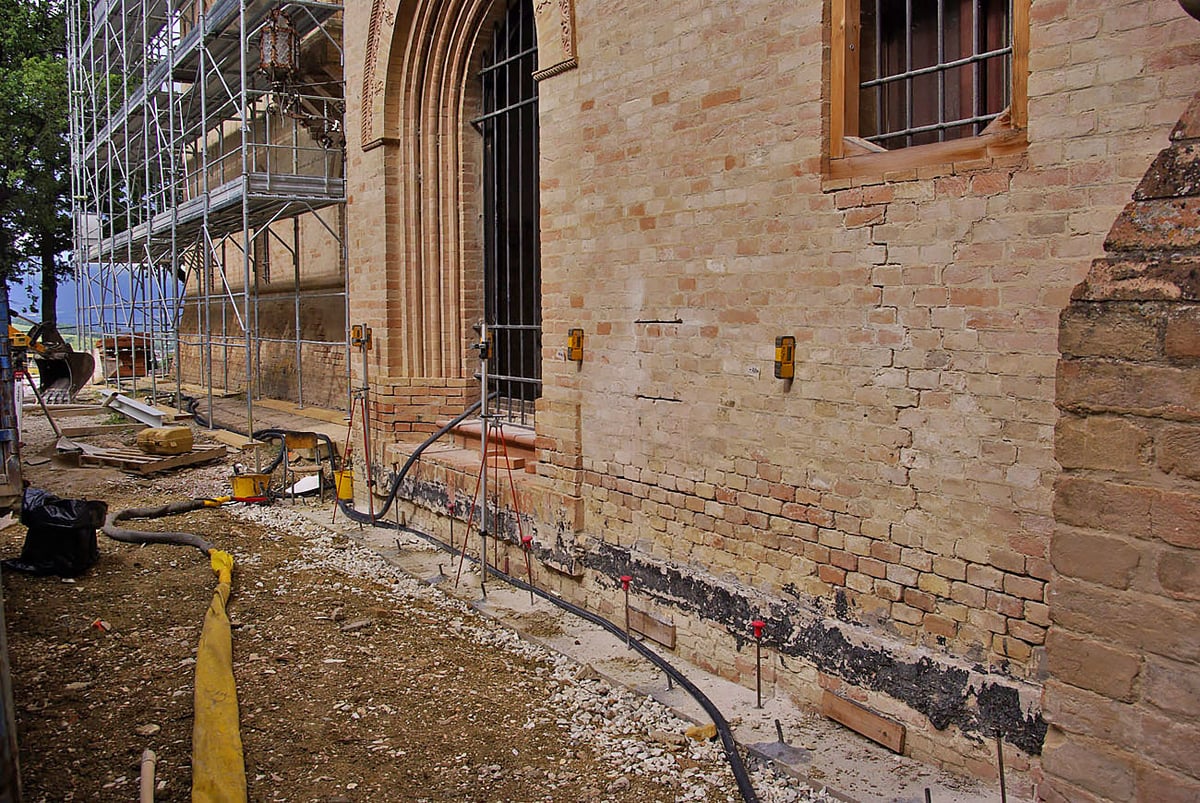
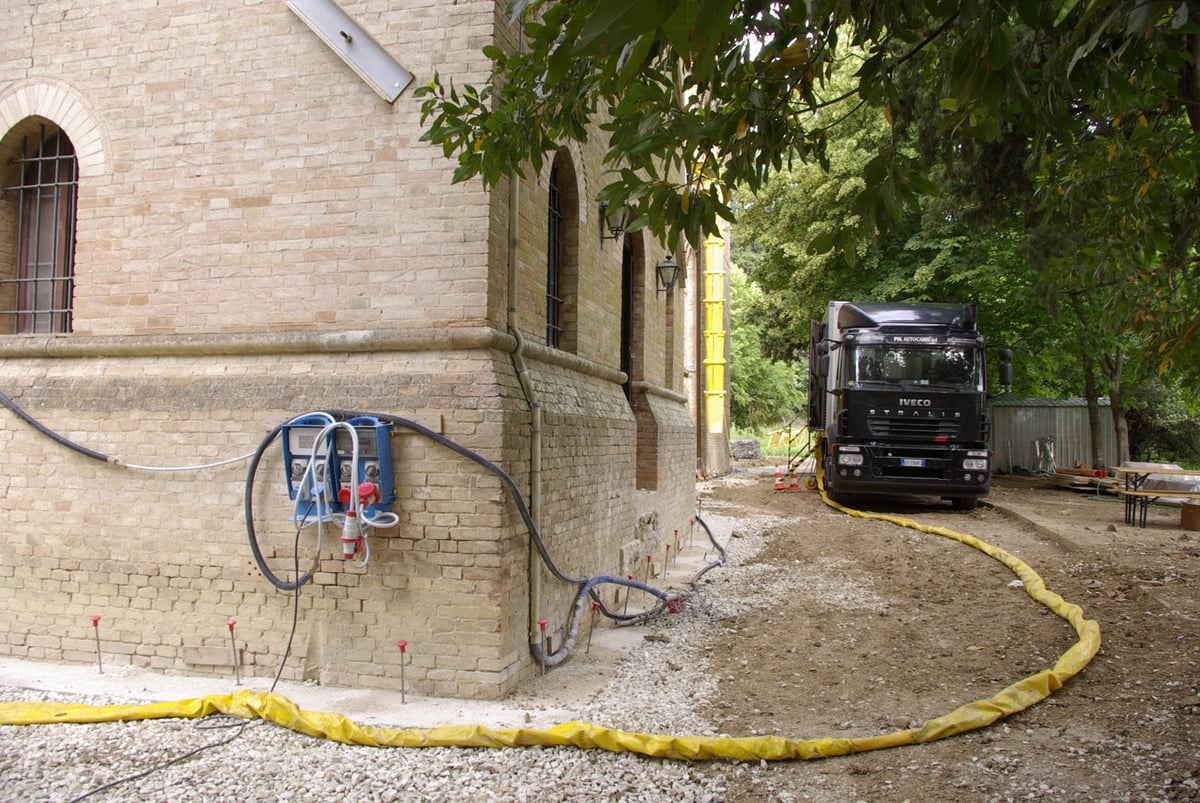
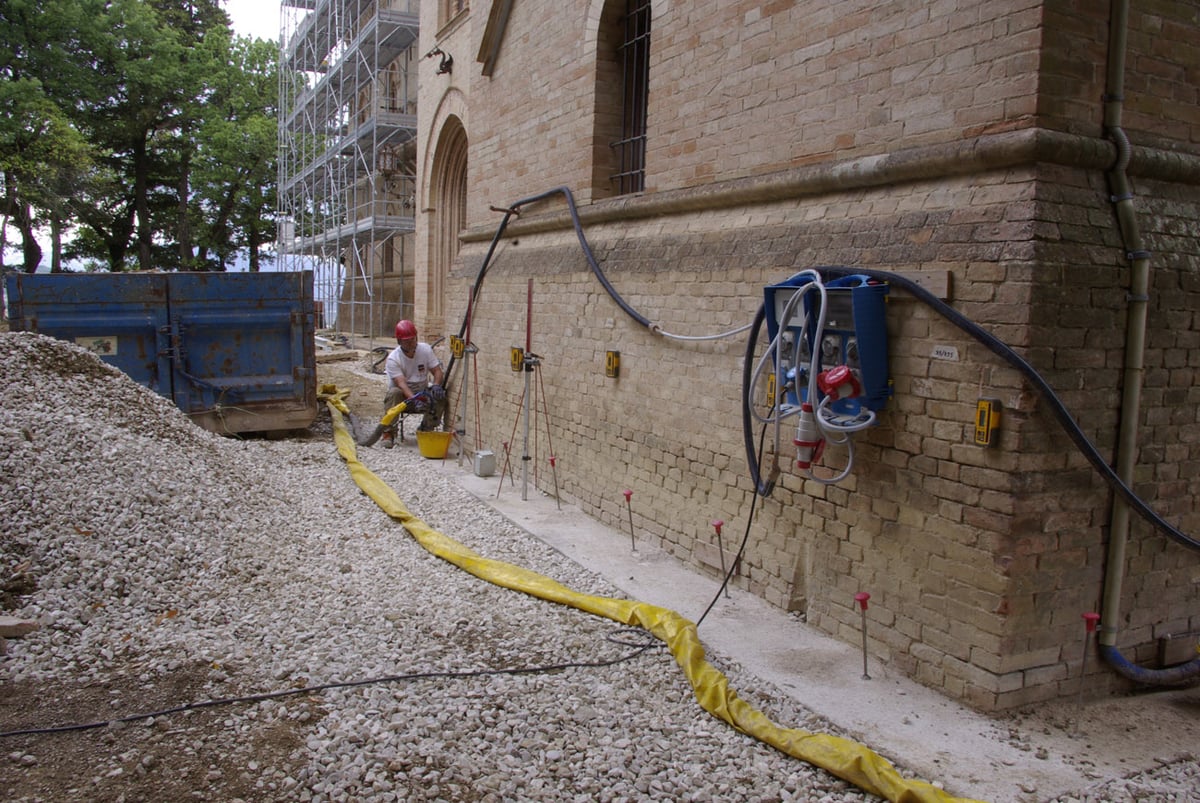
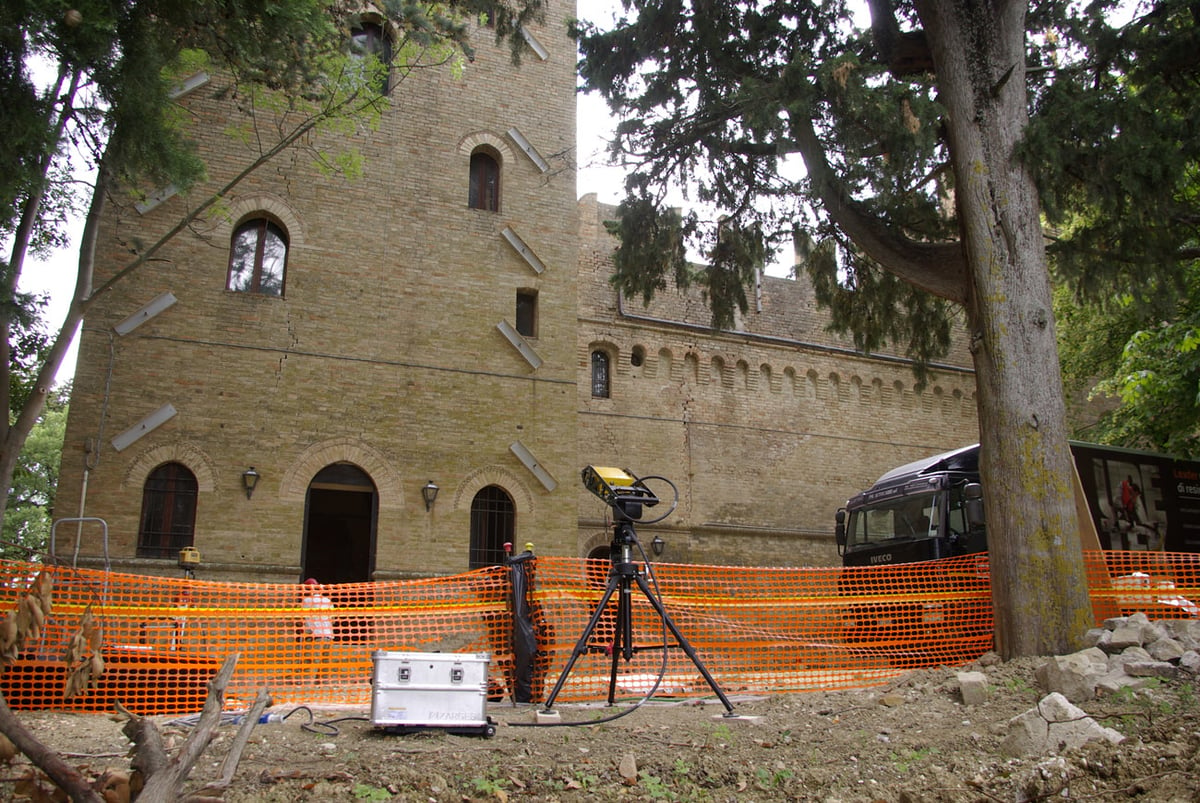
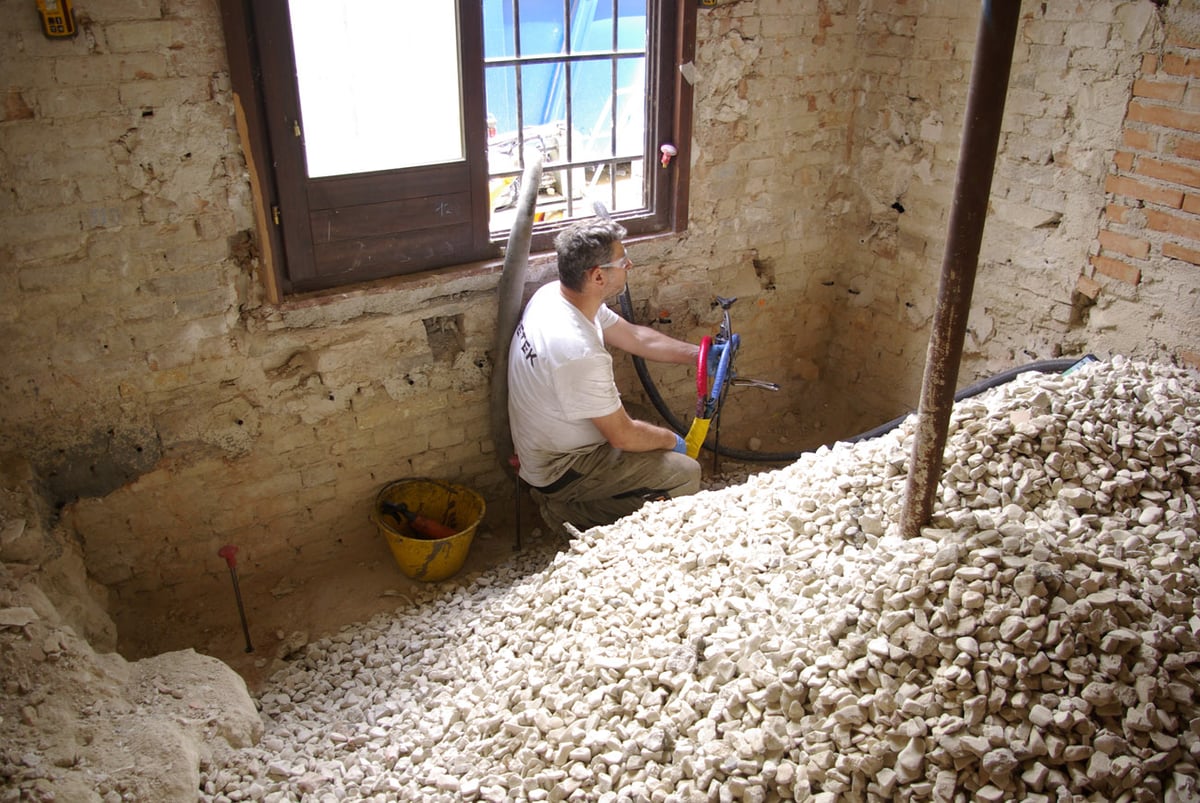
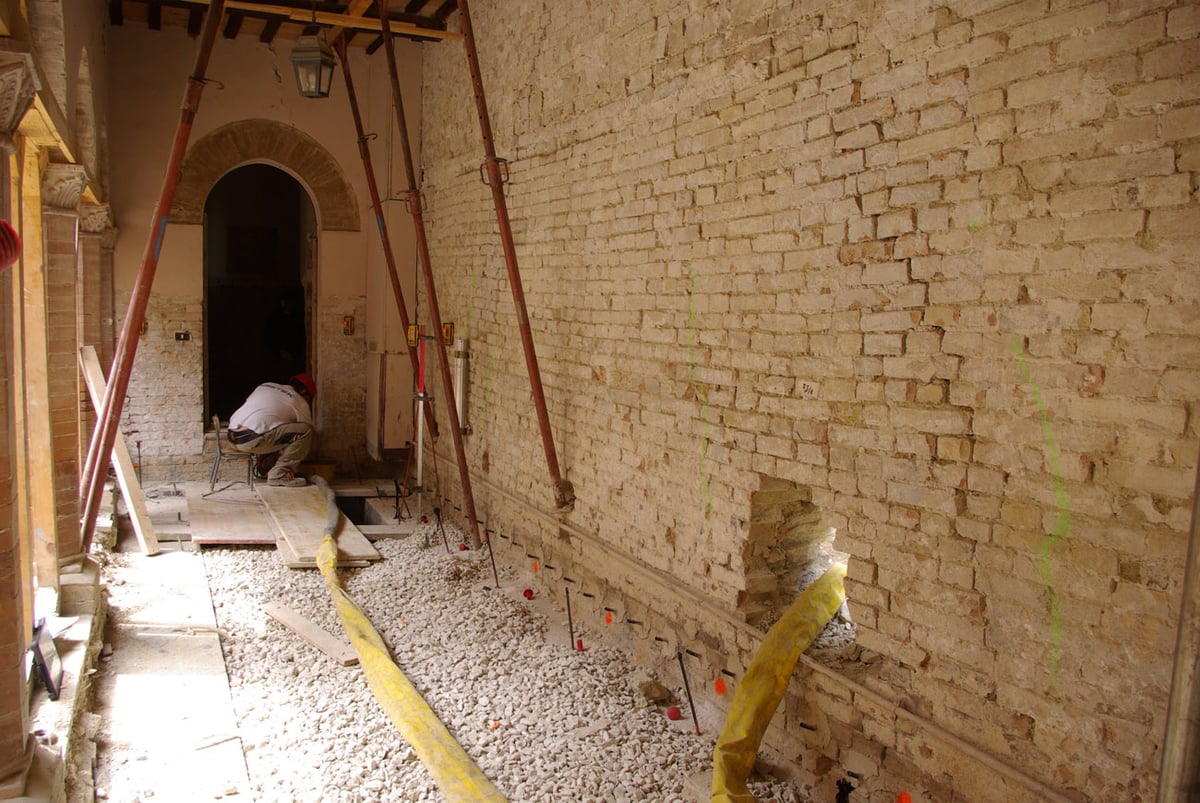
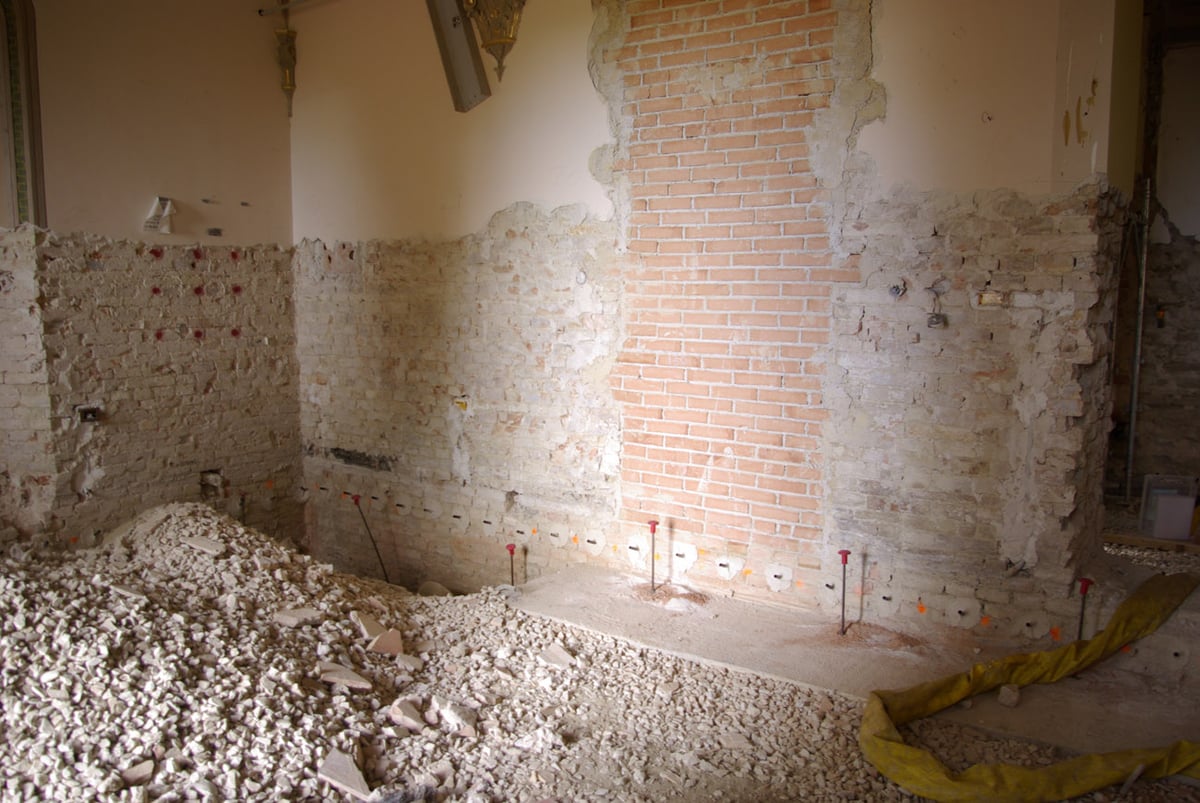
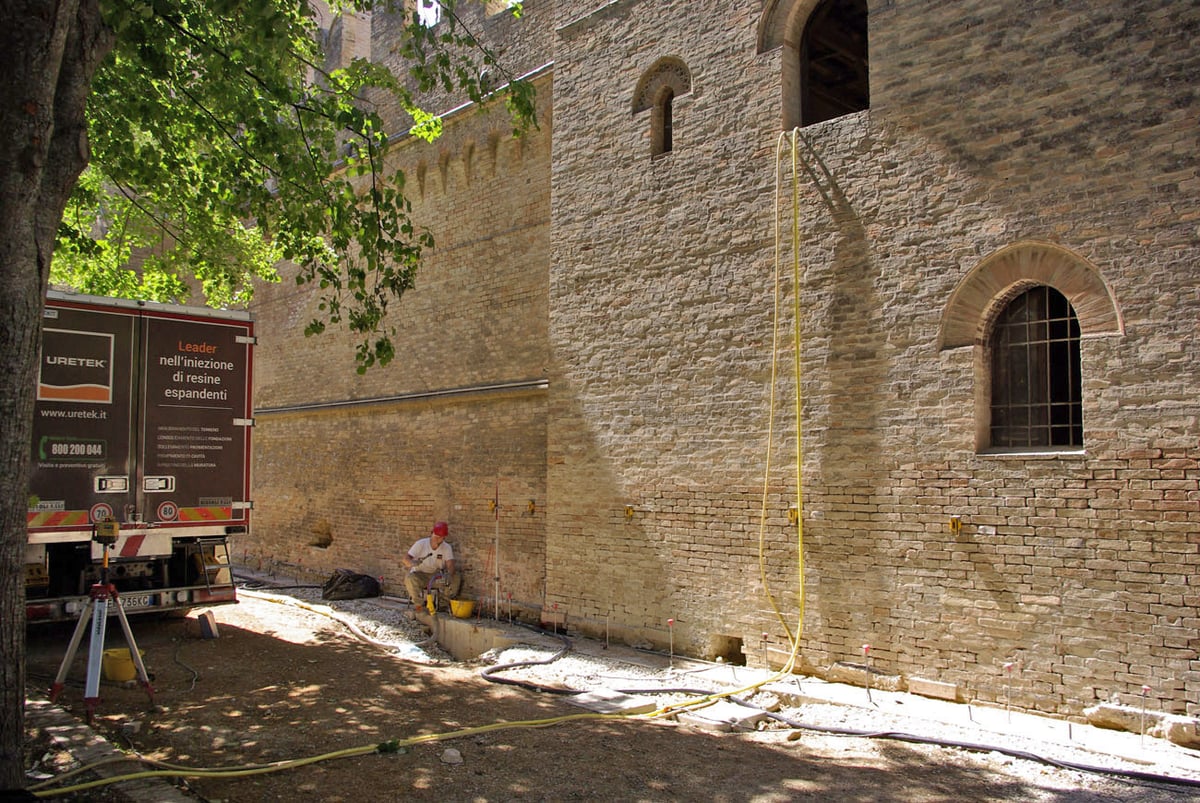
THE SOLUTION
Using the patented Uretek Multipoint® system, we uniformly consolidated 105 metres of continuous foundation with a limited number of injection tubes. We inserted the tubes at the base of the foundation following a defined layout based on the position and shape of the reinforced concrete kerbs built at the side of the existing foundation, making injections in one and two rows of holes.
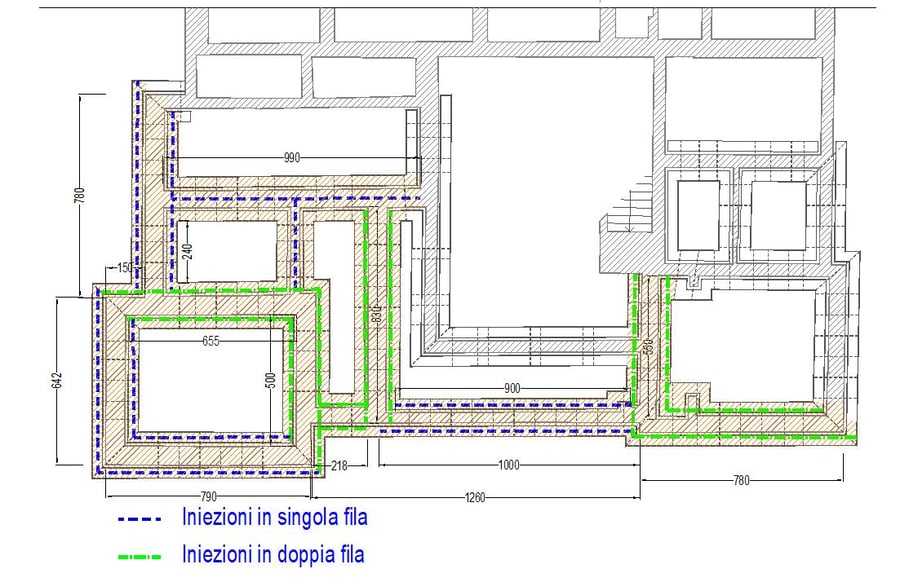
Fields of application Uretek Multipoint® technology: :
- Consolidation of large volumes of soil
- Buildings with foundations of a complex shape
- Industrial structures (cranes, etc.)
- Roads, service areas, airports, ports.
3D radar monitoring
We monitored the entire building using 3D radar instrumentation.
This tool, mounted on a tripod at a suitable distance from the building, scans the entire surface of the building and monitors hundreds of points in real time, recording their displacement in all directions with submillimetre accuracy. In this way, it is possible to verify the lift at all points of the building, a sign that the soil is being compacted and the kerb tensioned, and ensuring that the displacements do not damage the building itself.
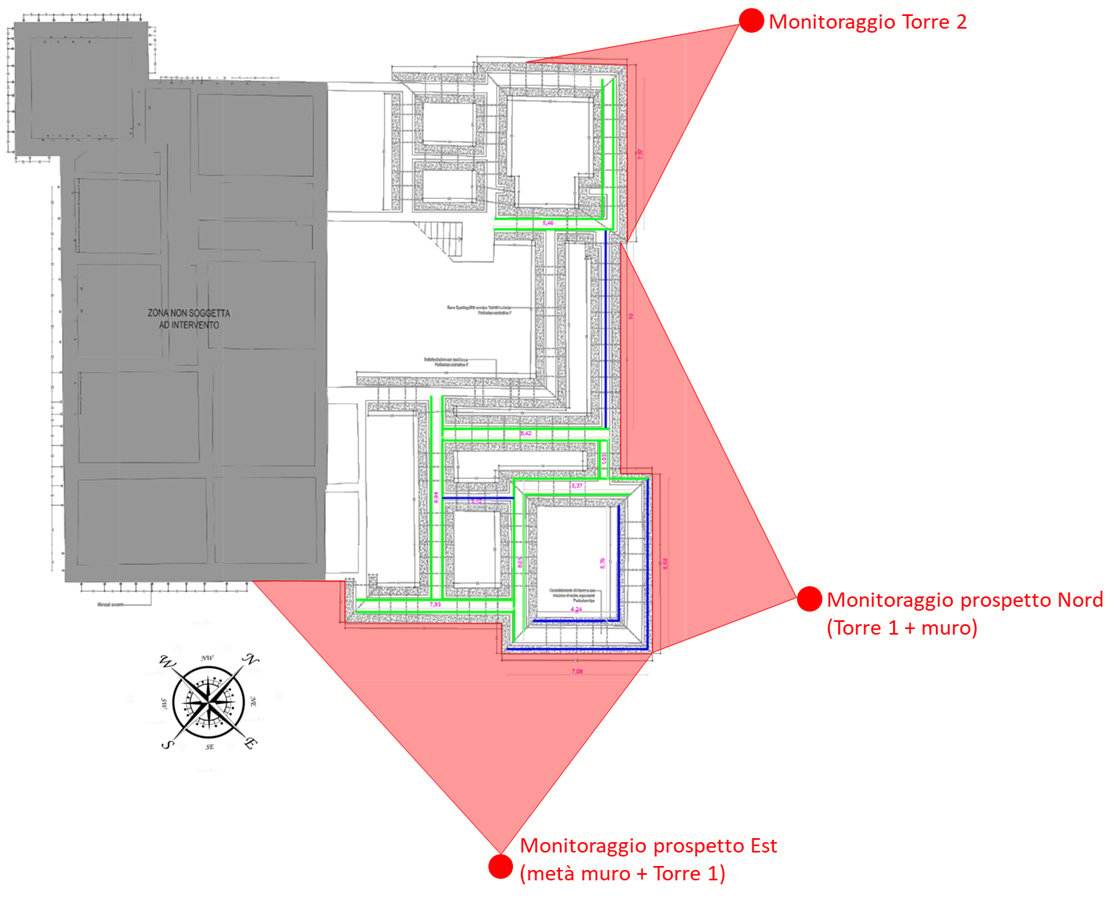
In chronological order, the areas monitored during the injections were:
- east elevation, including the right half of the wall and tower 1,
- north elevation, including tower 1 and the wall between the two towers,
- Tower 2 (north and west sides).
The 3D radar monitoring was organized into the following phases:
- An initial tomography was made as a baseline. For this tomography, the radar scanned hundreds of points in the scene and set their starting position, i.e. ‘zero’ position, based on which all successive displacements were recorded.
- The monitoring phase followed, in which the radar recorded the real-time displacements (every 30 seconds) of all points captured in the initial tomography.
Possible fields of application:
- Buildings and constructions with complex structures
- Buildings and constructions particularly sensitive to movements
- Historical and/or protected buildings and constructions
- Industrial buildings and constructions sensitive to movements
- Continuous, simultaneous monitoring of different parts of the construction with different positions and heights